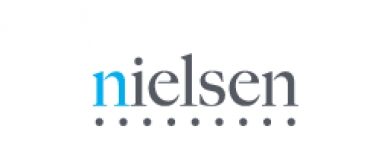

50% Of Indians Still Feel That They Are Living In A Recessionary Environment
India continues to lead the global confidence index for the quarter at 131 points, the same as last quarter followed by Philippines (117), Indonesia (115) and Thailand (114).
Among the world’s largest economies, China’s score was 107, a rise of one point from the third quarter, followed by the U.K. (101), the U.S. (100), Germany (98) and Japan (79), which all showed quarter-on-quarter confidence declines.
The Nielsen consumer confidence index measures perceptions of local job prospects, personal finances and immediate spending intentions among more than 30,000 respondents with Internet access in 61 countries. Consumer confidence levels above and below a baseline of 100 indicate degrees of optimism and pessimism, respectively.
PERSONAL FINANCES AND CONCERNS
In the latest online survey, conducted Nov 2–25, 2015, four in five (80%) urban Indian respondents indicated the highest level of optimism globally on job prospects, down one percentage point from the previous quarter (81% in Q3 2015). Similar trends were seen when respondents were questioned about perceptions on the state of their personal finances over the next 12 months – 82% said it was good or excellent for the quarter.
Job security continues to be the top concern for Indians (20%). However, state of the economy (14%) has replaced work-life balance (7%) as the second biggest concern, which is down from 12% in the same quarter last year. Other concerns include climate change, increasing food prices and health.
RECESSIONARY SENTIMENT STILL GRIPS MORE THAN HALF OF THE NATION
India’s recessionary sentiment, on the other hand, is notably high (50%) given their optimistic confidence index score of 131.
“With inflation largely under control and various macro-economic indicators looking positive, the industry is looking at a period of stability after a volatile 2015. This sense of optimism seems to be rubbing off on the Indian consumer, and consumption is expected to get a fillip in the new year,” said Roosevelt D’Souza, Senior Vice President, Nielsen India Region. “Though some of the major CPG companies posted muted growth in the last quarter, India Inc. is largely optimistic going forward. This confidence is perhaps bolstered by the government’s vision to play the role of an enabler to ensure sustained growth. The recently launched ‘start-up India’ campaign also seems to have played a role in helping improve overall consumer sentiment through the promise of job creation,” he added.
DISCRETIONARY SPENDING & SAVINGS
India once again leads the top ten countries when it comes to perceptions of a whether it’s a good/bad time to buy things they want and need over the next 12 months. Over three out of five (65%) online respondents polled indicated this is indeed a good time for purchases. These levels of optimism are four percentage points higher than the same period last year (61% in Q4 2014).
Compared to the previous quarter, there’s a dip in the number of respondents who said they will put spare cash into savings – only 63% indicated they will invest in savings this quarter versus 70% in Q3 2015. In fact, this dip extends to other spheres as well where only 50% of respondents said they will put spare cash into acquiring new technology products compared to 56% in Q3 2015. There’s almost a 10% decline when it comes to utilising spare cash for holidays/vacations (47%).
Indians continue to be cautious when it comes to their spending habits. Four out of five respondents (79%) have changed their spending habits to save on household expenses – similar to the trends seen in the same quarter last year (78% in Q4 2014). When asked about actions taken to cut down on household expenses, most Indians say they’ll spend less on new clothes (44%). This is closely followed by trying to save on gas and electricity (43%).
The survey also found that even when economic conditions do improve, the respondents polled said they will continue to try and save on gas and electricity consumption (28%) as well as curtail spending on new clothes (22%).
ABOUT THE GLOBAL SURVEY METHODOLOGY
The findings in this survey are based on an online methodology in 61 countries. While an online survey methodology allows for tremendous scale and global reach, it provides a perspective only on the habits of existing Internet users, not total populations. In developing markets where online penetration is still growing, audiences may be younger and more affluent than the general population of that country. Three sub-Saharan African countries (Kenya, Nigeria and Ghana) utilize a mobile survey methodology and are not included in the global or Middle East/Africa averages discussed throughout this report. In addition, survey responses are based on claimed behaviour rather than actual metered data. Cultural differences in reporting sentiment are likely factors in the measurement of economic outlook across countries. The reported results do not attempt to control or correct for these differences, therefore, caution should be exercised when comparing across countries and regions, particularly across regional boundaries.
